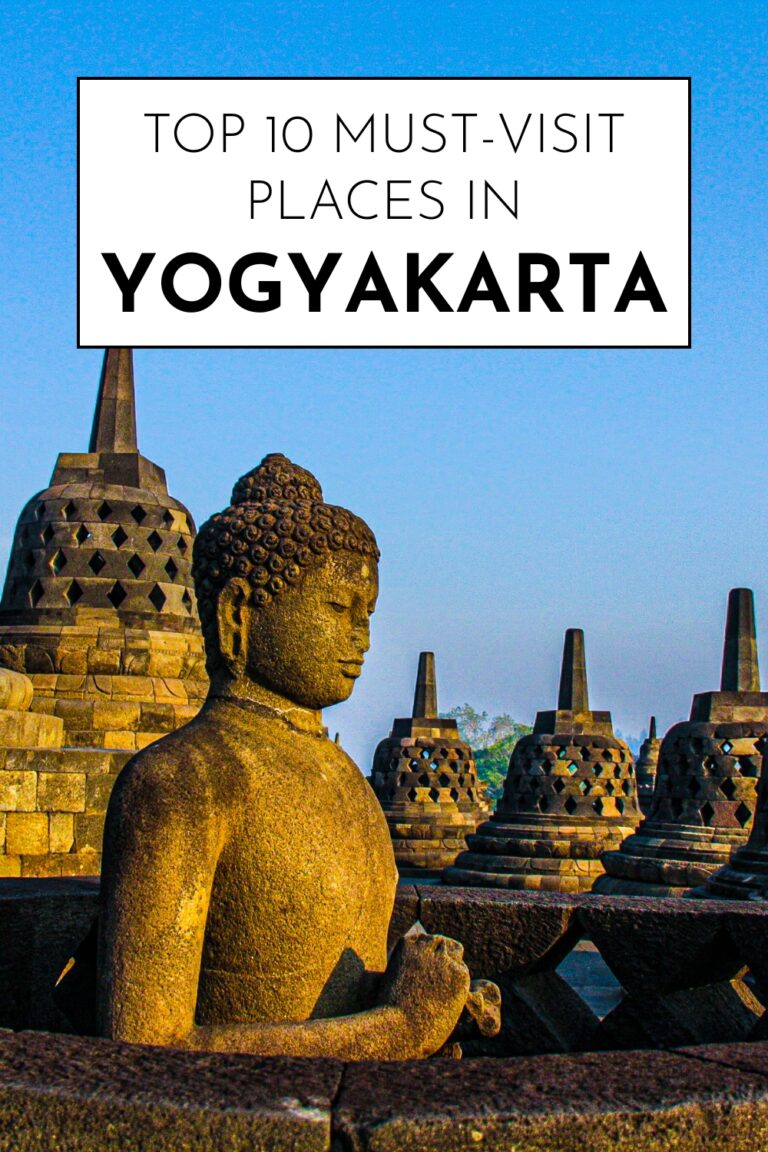Yogyakarta, affectionately known as Jogja by locals, stands as Indonesia’s cultural heart and soul. This special region on Java island serves as the country’s center of traditional arts, education, and Javanese culture. Once the seat of powerful sultanates, Yogyakarta today seamlessly blends ancient traditions with modern Indonesian life.
What makes Yogyakarta truly remarkable is its unique status as the only region in Indonesia still ruled by a pre-colonial monarchy. The Sultan of Yogyakarta continues to govern alongside elected officials, creating a fascinating political structure that reflects the city’s deep respect for tradition and heritage.
The city pulses with creative energy from its numerous universities, particularly the renowned Gadjah Mada University. This academic atmosphere creates a vibrant mix of students, artists, and intellectuals who contribute to Yogyakarta’s reputation as Indonesia’s cultural capital. Street art adorns walls throughout the city, traditional batik workshops operate alongside modern galleries, and ancient gamelan music echoes through contemporary performance spaces.
Beyond the city limits, Yogyakarta serves as the gateway to some of Indonesia’s most spectacular archaeological sites. The magnificent temples of Borobudur and Prambanan, both UNESCO World Heritage sites, lie within easy reach and represent the pinnacle of ancient Javanese architecture and spiritual expression.
The city’s culinary scene offers authentic Javanese cuisine at incredibly affordable prices. From royal court dishes to street food favorites, Yogyakarta’s food culture reflects centuries of culinary evolution and cultural exchange. The famous Malioboro Street buzzes with activity day and night, offering everything from traditional handicrafts to modern Indonesian fashion.
Let’s explore the ten essential destinations that showcase why Yogyakarta deserves its place as Indonesia’s most culturally significant city.
1. Borobudur Temple – Ancient Buddhist Marvel
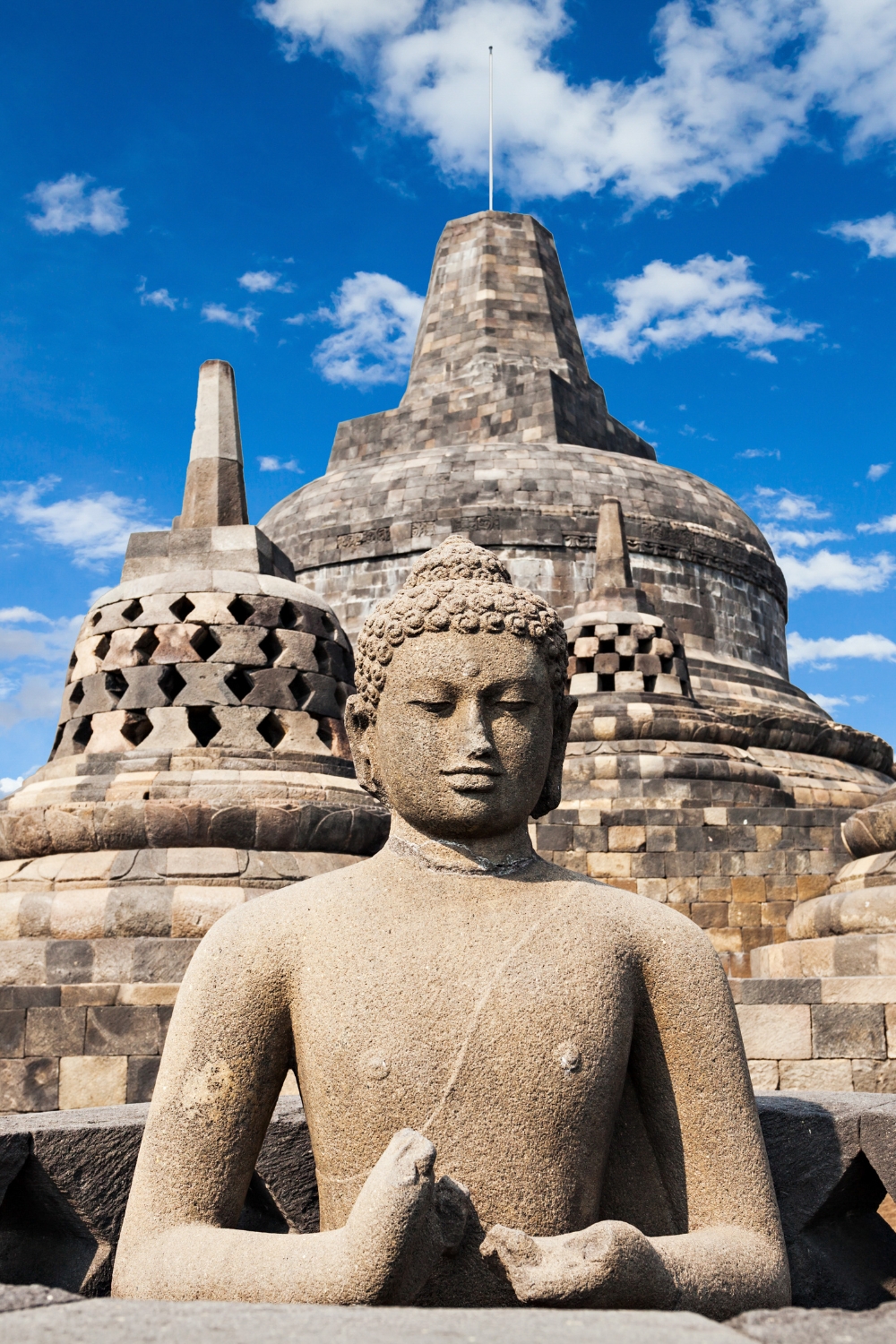
Standing majestically in the Magelang regency, Borobudur Temple represents the world’s largest Buddhist monument and one of humanity’s greatest architectural achievements. This 9th-century masterpiece predates Cambodia’s Angkor Wat by 300 years and continues to inspire visitors with its perfect blend of spiritual symbolism and artistic excellence.
Architectural Wonder and Spiritual Journey
Borobudur’s design represents the Buddhist concept of the universe in stone. The temple consists of nine stacked platforms – six square and three circular – topped by a central dome. This structure symbolizes the journey from earthly desires to spiritual enlightenment, with each level representing different stages of Buddhist cosmology.
The temple contains over 2,600 relief panels and 504 Buddha statues, each carved with incredible detail and precision. Walking the temple’s pathways becomes a meditation journey, with relief panels telling stories from Buddhist teachings and Javanese life in ancient times.
Sunrise Experience and Photography
The sunrise view from Borobudur creates one of Indonesia’s most breathtaking experiences. As morning mist lifts from the surrounding valleys and mountains, the temple emerges like a spiritual vision against the golden sky. The play of light and shadow across the ancient stone creates constantly changing photographic opportunities.
Professional photographers and casual visitors alike find endless inspiration in the temple’s intricate details, sweeping valley views, and the interplay between ancient architecture and natural beauty. The surrounding landscape of rice fields, volcanoes, and traditional villages provides context for understanding the temple’s historical significance.
Distance from Yogyakarta: 40 kilometers
Best time: Sunrise (5:30 AM – 6:30 AM)
Duration: 2-3 hours
UNESCO Status: World Heritage Site since 1991
2. Prambanan Temple Complex – Hindu Architectural Masterpiece

Prambanan Temple Complex stands as Southeast Asia’s largest Hindu temple compound and represents the pinnacle of ancient Javanese Hindu architecture. Built in the 9th century, this magnificent complex demonstrates the sophisticated artistic and engineering capabilities of the Mataram Kingdom.
Sacred Architecture and Religious Significance
The main temple complex consists of three towering temples dedicated to the Hindu trinity: Brahma, Vishnu, and Shiva. The central Shiva temple rises 47 meters high, making it the tallest ancient temple in Indonesia. Each temple showcases intricate stone carvings that depict scenes from Hindu epics, particularly the Ramayana and Mahabharata.
The temple’s design reflects Hindu cosmology, with the central spire representing Mount Meru, the sacred mountain at the center of the universe. The complex originally contained 240 temples, though many were destroyed by earthquakes and the passage of time.
Cultural Performances and Living Heritage
Prambanan serves as more than just an archaeological site – it remains a living cultural center. Regular performances of the Ramayana Ballet take place in an open-air theater with the illuminated temples as backdrop. These performances combine traditional Javanese dance, music, and storytelling with modern theatrical techniques.
The complex hosts various cultural events throughout the year, including traditional ceremonies, art exhibitions, and educational programs. These activities help preserve Javanese Hindu traditions while making them accessible to contemporary audiences.
Distance from Yogyakarta: 17 kilometers
Best time: Late afternoon for golden light
Cultural performances: Ramayana Ballet (seasonal)
UNESCO Status: World Heritage Site since 1991
3. Kraton Yogyakarta – Living Royal Palace
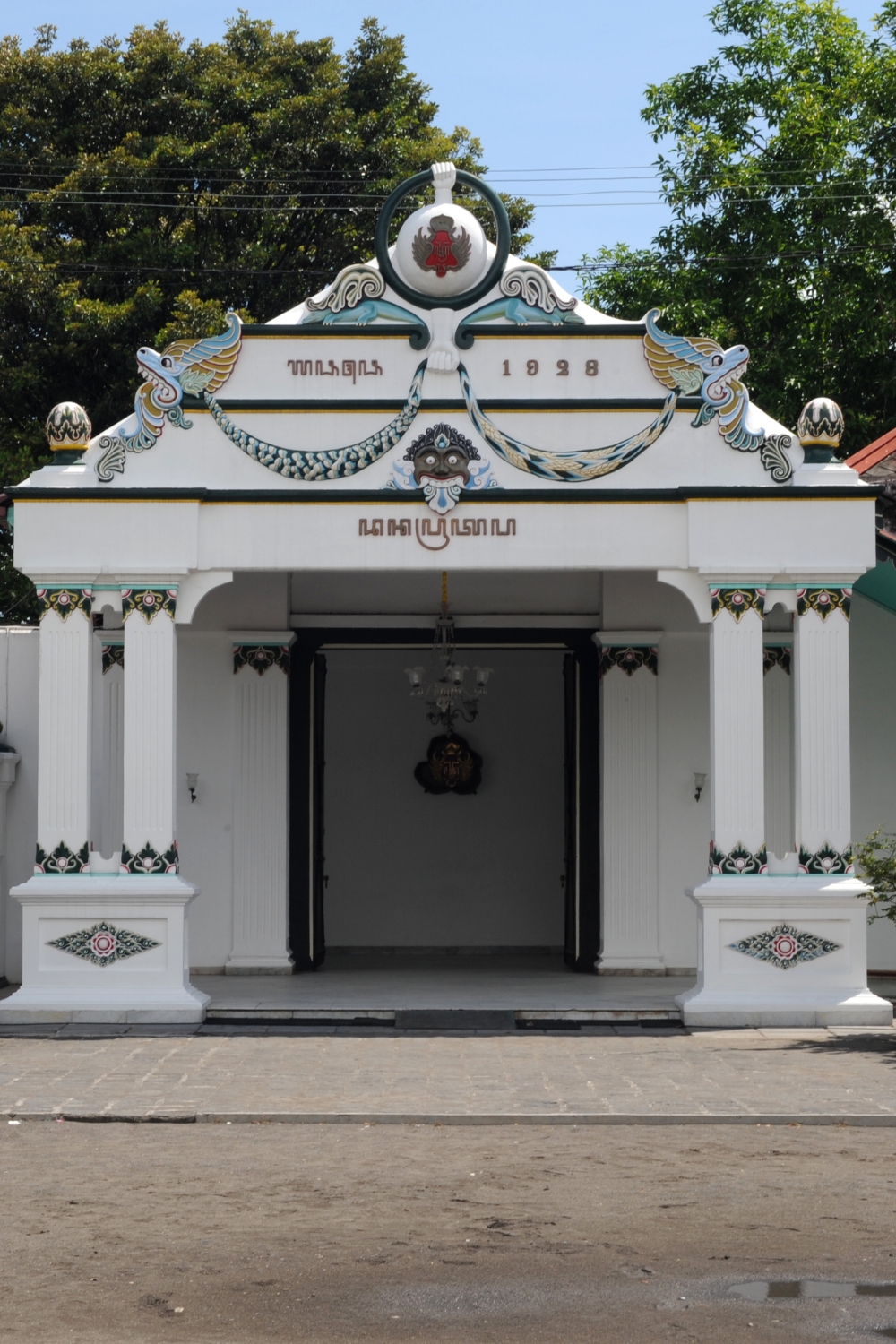
The Kraton Yogyakarta serves as the official residence of the Sultan of Yogyakarta and represents one of the finest examples of traditional Javanese palace architecture. This living palace complex continues to function as both a royal residence and a cultural center preserving centuries of Javanese court traditions.
Traditional Javanese Architecture and Royal Life
The palace complex covers 15,000 square meters and contains numerous buildings, courtyards, and gardens designed according to traditional Javanese architectural principles. The layout reflects Javanese cosmology, with the Sultan’s residence at the center representing the axis between heaven and earth.
Visitors can explore the palace museum, which houses royal artifacts including traditional weapons, jewelry, gamelan instruments, and historical documents. The collection provides insight into the sophisticated court culture that developed over centuries of royal patronage.
Living Cultural Heritage and Royal Traditions
Unlike many historical palaces, the Kraton remains an active royal residence where traditional ceremonies and court rituals continue. The palace guards, known as Abdi Dalem, wear traditional Javanese court dress and maintain customs that have been practiced for generations.
Daily cultural performances include traditional gamelan music, classical Javanese dance, and puppet shows. These performances aren’t tourist shows but authentic expressions of living court culture. The palace also hosts major ceremonies during Islamic holidays and royal celebrations.
Opening hours: 8:30 AM – 2:00 PM (closed Fridays)
Entry fee: 15,000 IDR
Cultural performances: Daily gamelan and dance
Guided tours: Available in multiple languages
4. Malioboro Street – Cultural Heart of Yogyakarta
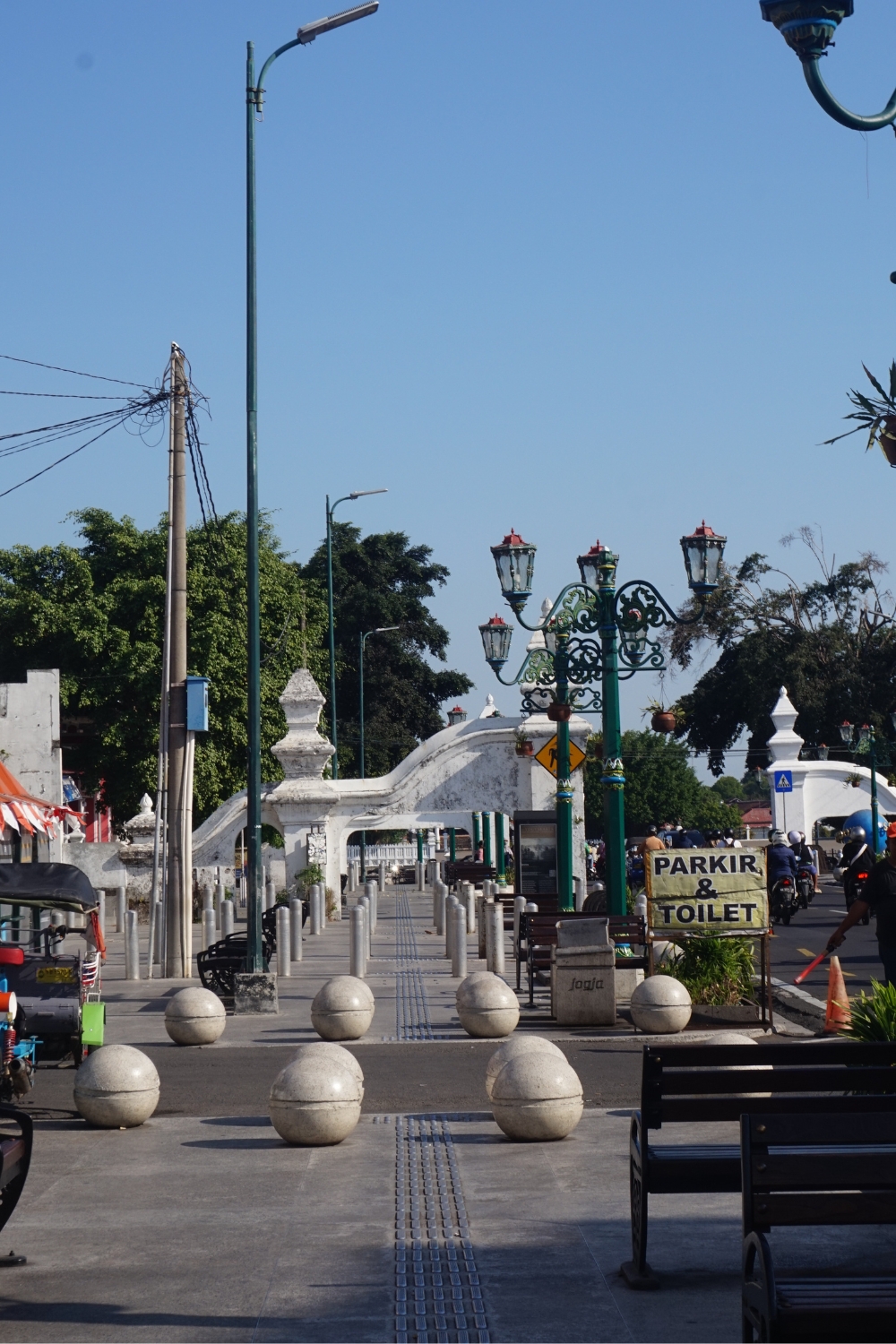
Malioboro Street represents the beating heart of Yogyakarta’s social and commercial life. This iconic pedestrian boulevard stretches for 2.5 kilometers from the railway station toward the Sultan’s palace, creating a perfect microcosm of Indonesian culture, commerce, and daily life.
Shopping Paradise and Cultural Immersion
Malioboro Street offers an incredible variety of shopping experiences, from traditional batik workshops to modern boutiques. Street vendors sell everything from traditional Indonesian snacks to handmade crafts, while established stores offer high-quality batik, silver jewelry, and traditional Indonesian clothing.
The street’s sidewalks become outdoor galleries where local artists display paintings, sculptures, and handicrafts. Bargaining is expected and becomes part of the cultural experience, allowing visitors to interact directly with local artisans and merchants.
Street Food Culture and Night Market
As evening approaches, Malioboro Street transforms into a massive outdoor food court. Street food vendors prepare gudeg (young jackfruit curry), bakpia (sweet pastries), and dozens of other local specialties. The aromas of spices, grilled meats, and tropical fruits create a sensory feast.
The night market extends the shopping experience with additional vendors selling everything from vintage clothing to electronic goods. Street performers, including traditional musicians and modern buskers, provide entertainment throughout the evening.
Best time to visit: Evening (6 PM – 10 PM)
Famous for: Batik shopping, street food, cultural performances
Transportation: Pedestrian-friendly, cycle rickshaws available
Budget: Very affordable, bargaining expected
5. Taman Sari Water Castle – Royal Garden Paradise
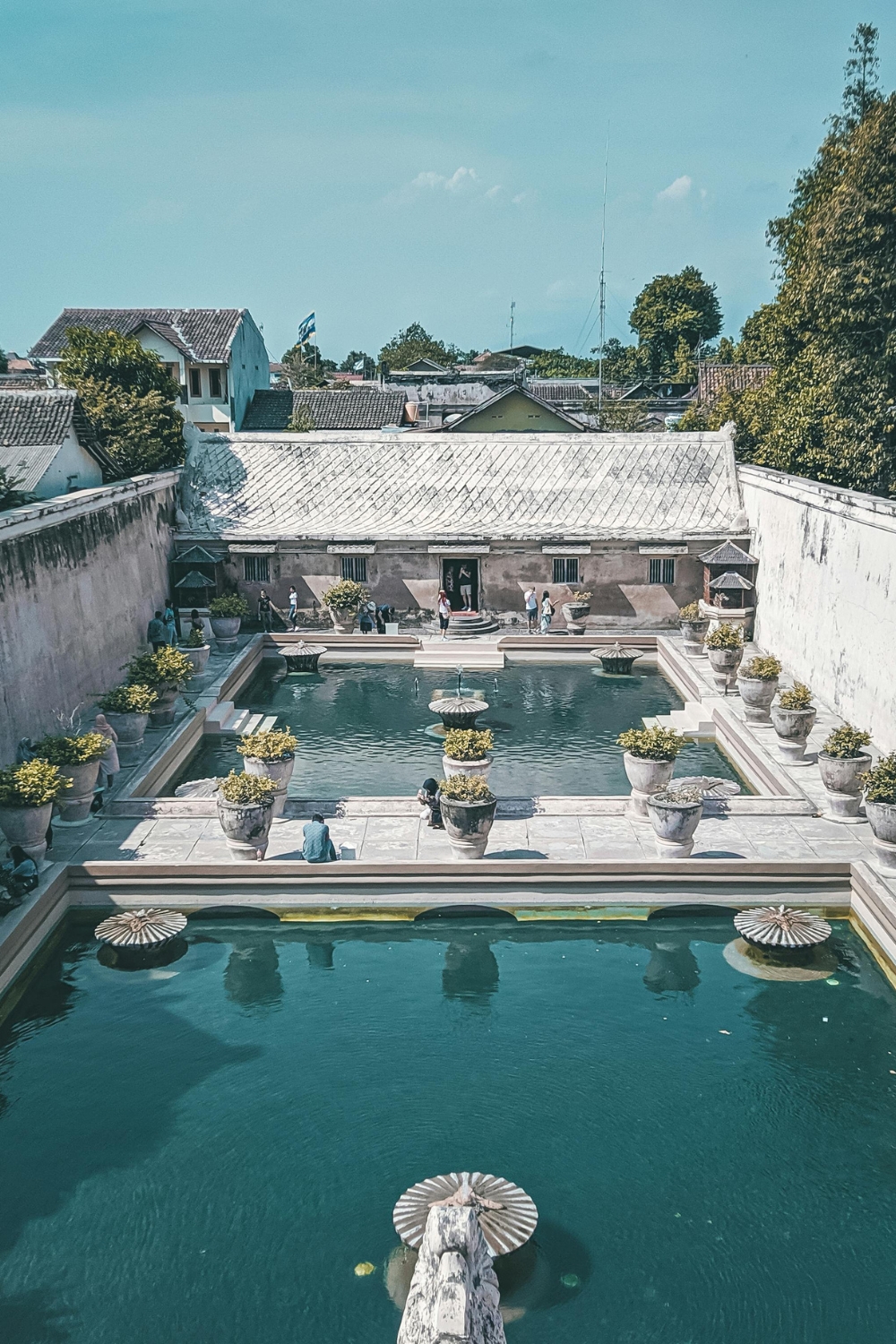
Taman Sari Water Castle represents the romantic ruins of an 18th-century royal garden complex built for the Sultan of Yogyakarta. This enchanting site combines Javanese, Islamic, and European architectural influences in a unique design that served as both pleasure garden and fortress.
Historical Romance and Architectural Beauty
The complex originally contained pools, meditation chambers, underground tunnels, and a mosque, all designed to create a paradise on earth for the royal family. The central bathing pools, where royal women once bathed, feature intricate stonework and hydraulic systems that demonstrate sophisticated engineering knowledge.
The site’s romantic atmosphere has inspired countless stories and legends about royal romance and court intrigue. The weathered stone structures, partially overgrown with tropical vegetation, create a mysterious and photogenic environment that captures the imagination.
Underground Tunnels and Hidden Chambers
Taman Sari includes an extensive network of underground passages that connected different parts of the complex and provided secret escape routes during times of danger. These tunnels, some of which remain accessible to visitors, add an element of adventure and mystery to the site.
The complex includes meditation chambers where royal family members could retreat for spiritual contemplation. These quiet spaces, with their thick stone walls and filtered light, provide a peaceful contrast to the bustling city outside.
Opening hours: 8:00 AM – 4:00 PM daily
Entry fee: 5,000 IDR
Highlights: Royal bathing pools, underground tunnels
Photography: Excellent for architectural and portrait photography
6. Gudeg Yu Djum – Culinary Heritage Experience

Gudeg Yu Djum represents more than just a restaurant – it’s a cultural institution that has been serving Yogyakarta’s signature dish for over 70 years. This legendary eatery offers visitors an authentic taste of royal Javanese cuisine in a traditional setting that hasn’t changed in decades.
Traditional Javanese Cuisine and Royal Flavors
Gudeg, Yogyakarta’s most famous dish, consists of young jackfruit slowly cooked in coconut milk, palm sugar, and traditional spices. The cooking process takes up to 12 hours, creating a rich, sweet curry that embodies the complexity of Javanese cuisine. The dish is typically served with rice, chicken, hard-boiled eggs, and sambal (chili sauce).
Yu Djum’s recipe has been passed down through three generations and remains unchanged from the original court recipe. The restaurant sources ingredients from traditional suppliers and maintains cooking methods that preserve the authentic flavors of royal Javanese cuisine.
Cultural Dining Experience and Local Atmosphere
The restaurant’s simple, traditional setting provides an authentic Indonesian dining experience. Customers sit on woven mats at low tables, eating with their hands in traditional Indonesian style. The atmosphere reflects the democratic nature of Indonesian food culture, where people from all social backgrounds share the same dining space.
The restaurant operates 24 hours a day, serving different communities throughout the day and night. Morning customers include market workers and early commuters, while evening diners consist of families and tourists seeking authentic local cuisine.
Operating hours: 24 hours daily
Famous dish: Gudeg (young jackfruit curry)
Price range: 15,000 – 25,000 IDR per portion
Cultural significance: Traditional royal cuisine, family recipe
7. Goa Jomblang – Underground Adventure
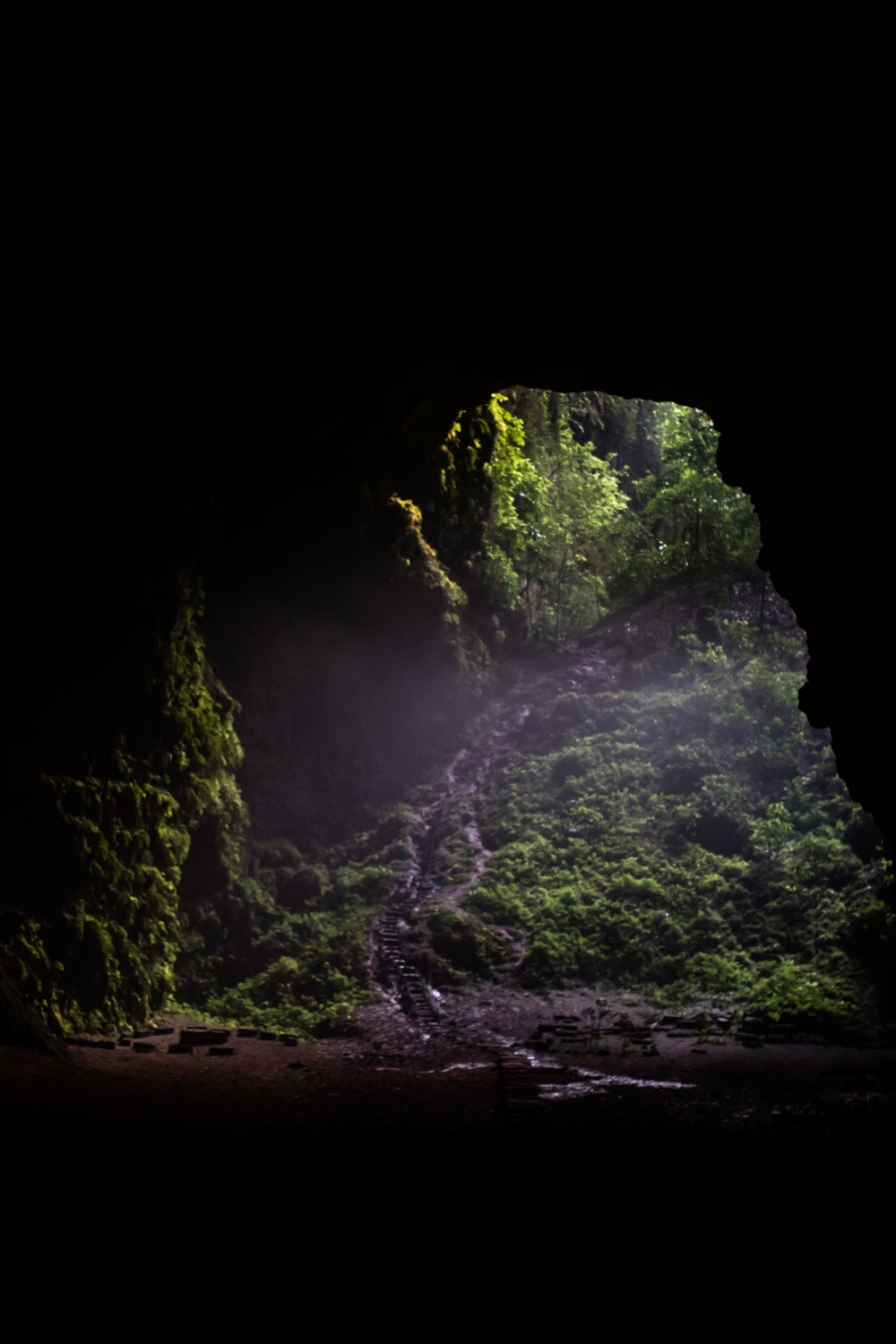
Goa Jomblang offers one of Indonesia’s most spectacular underground adventures, combining vertical caving with incredible natural light phenomena. This vertical cave system, formed by underground river erosion, provides an otherworldly experience that attracts adventurers from around the world.
Vertical Cave Adventure and Natural Phenomena
The cave entrance consists of a 60-meter vertical shaft that requires rappelling equipment and professional guides to access safely. The descent reveals a massive underground chamber with tropical vegetation growing in the depths, creating a lost world atmosphere.
The cave’s most famous feature is the “heavenly light” phenomenon that occurs when sunlight streams through the cave opening at specific times of day. This natural light beam illuminates the underground forest and creates ethereal photographic opportunities that have made Goa Jomblang internationally famous.
Professional Caving and Safety Measures
All visits to Goa Jomblang require professional guides and safety equipment. The caving operation employs international safety standards and provides comprehensive training before the descent. The experience includes professional rappelling instruction and all necessary safety gear.
The cave system connects to other underground chambers and passages, some of which contain underground rivers and additional natural formations. Advanced caving expeditions can explore these deeper sections with proper preparation and equipment.
Distance from Yogyakarta: 50 kilometers
Duration: Full day (6-8 hours)
Difficulty: Moderate to advanced
Requirements: Professional guide, safety equipment mandatory
8. Affandi Museum – Indonesian Art Masterpiece
The Affandi Museum showcases the life and work of Indonesia’s most celebrated modern artist, Affandi, whose unique painting style and unconventional techniques earned him international recognition. The museum, housed in the artist’s former home and studio, provides insight into Indonesia’s modern art movement.
Modern Indonesian Art and Unique Techniques
Affandi developed a distinctive painting style that involved applying paint directly from tubes onto canvas, often using his fingers instead of brushes. His self-portraits, landscapes, and social commentary pieces reflect both personal expression and broader Indonesian cultural themes.
The museum displays over 300 of Affandi’s works, showing the evolution of his artistic style from realistic representations to abstract expressionism. The collection includes paintings, sketches, and personal artifacts that provide context for understanding his creative process.
Artistic Legacy and Cultural Impact
Affandi’s work transcends traditional Indonesian art forms and helped establish modern Indonesian art in the international arena. His paintings address universal themes of human experience while maintaining distinctly Indonesian cultural elements.
The museum also features works by other Indonesian artists, including Affandi’s daughter Kartika Affandi, who continued the family’s artistic tradition. The museum serves as a center for Indonesian art education and cultural exchange.
Opening hours: 9:00 AM – 4:00 PM (closed Mondays)
Entry fee: 20,000 IDR
Collection: Over 300 artworks
Cultural significance: Modern Indonesian art movement
9. Parangtritis Beach – Mystical Ocean Gateway
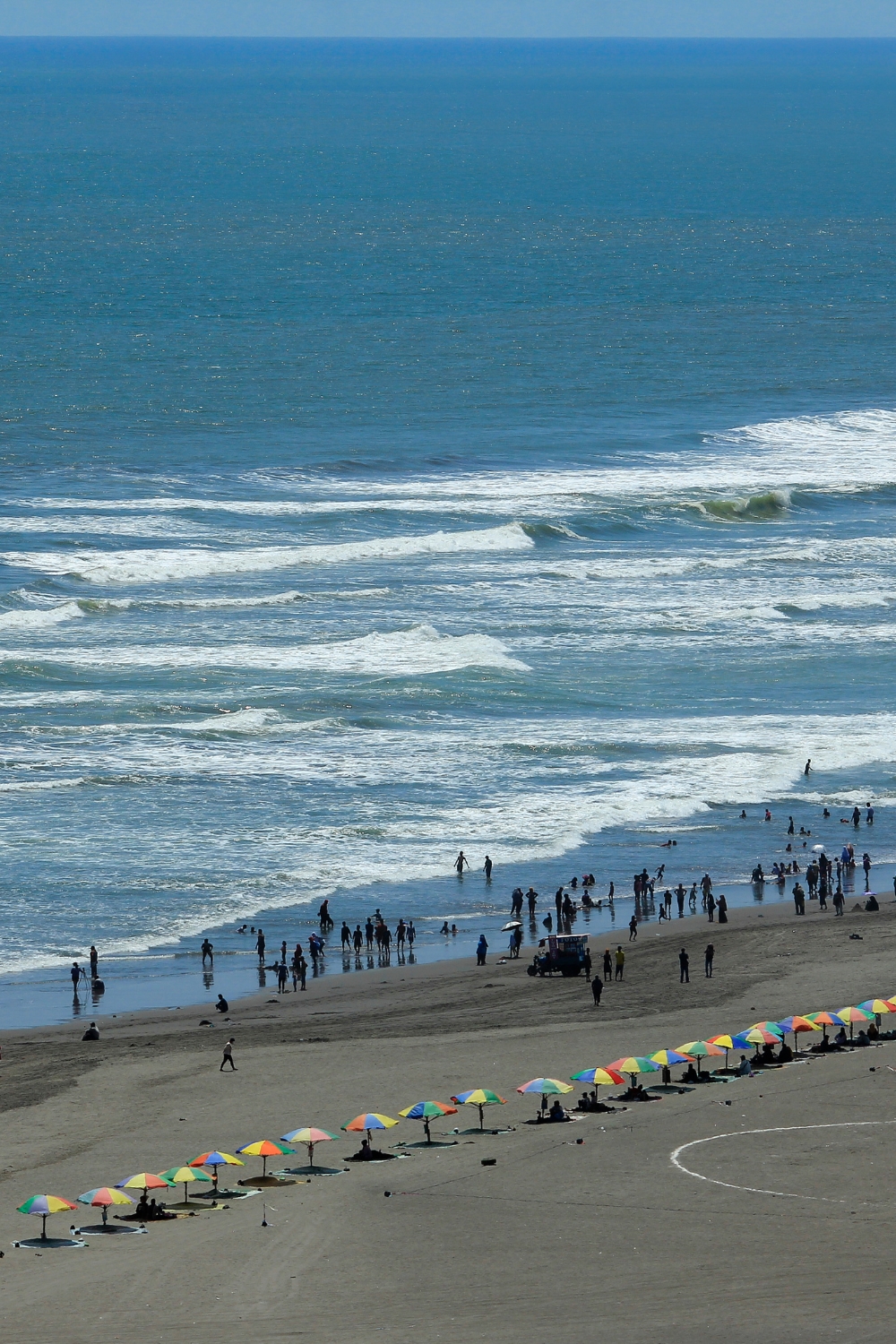
Parangtritis Beach represents one of Java’s most dramatic and culturally significant coastal destinations. This black sand beach, formed by volcanic activity, combines natural beauty with deep spiritual significance in Javanese culture and offers spectacular sunset views over the Indian Ocean.
Dramatic Coastal Landscape and Natural Beauty
The beach’s distinctive black volcanic sand creates a striking contrast with the blue Indian Ocean waters and white foam of crashing waves. Towering cliffs frame the coastline, while sand dunes behind the beach create a desert-like landscape unique in Java.
The powerful waves and strong currents make swimming dangerous, but the beach offers excellent opportunities for walking, photography, and enjoying the dramatic natural scenery. The sound of crashing waves and the vast ocean horizon create a meditative atmosphere.
Cultural Significance and Spiritual Traditions
Parangtritis Beach holds deep spiritual significance in Javanese culture as the earthly realm of Nyai Loro Kidul, the mystical Queen of the Southern Ocean. Local traditions include ceremonies and offerings made to honor this spiritual figure, who is believed to protect the Javanese people.
The beach attracts both tourists and spiritual pilgrims who come to participate in traditional ceremonies or simply to connect with the powerful natural energy of the location. The spiritual atmosphere adds depth to the beach experience beyond typical coastal tourism.
Distance from Yogyakarta: 27 kilometers
Best time: Late afternoon for sunset
Activities: Beach walking, photography, cultural observation
Swimming: Not recommended due to strong currents
10. Kotagede – Historic Silver Heritage
Kotagede represents the historic heart of the Mataram Sultanate and continues to serve as the center of Yogyakarta’s traditional silver craftsmanship. This ancient neighborhood combines archaeological significance with living cultural traditions, making it essential for understanding Yogyakarta’s royal heritage.
Historical Significance and Royal Heritage
Kotagede served as the capital of the Mataram Sultanate in the 16th and 17th centuries, making it one of Java’s most important historical sites. The neighborhood contains the royal cemetery where early Mataram rulers are buried, along with remnants of the ancient palace complex.
The area’s traditional architecture showcases classical Javanese building techniques and design principles. Many buildings date back centuries and demonstrate the sophisticated urban planning and architectural skills of the Mataram period.
Traditional Silver Craftsmanship and Artisan Culture
Kotagede has been the center of Java’s silver craftsmanship for over 400 years. Local artisans continue to practice traditional silver working techniques passed down through generations, creating jewelry, decorative objects, and religious items.
Visitors can observe artisans at work in traditional workshops, learning about the techniques and cultural significance of silver craftsmanship in Javanese culture. Many workshops offer demonstrations and sell high-quality handmade silver items directly from the craftsmen.
Historical period: 16th-17th century Mataram Sultanate
Famous for: Traditional silver craftsmanship
Activities: Cultural tours, silver shopping, historical exploration
Cultural significance: Royal heritage, traditional crafts
Planning Your Yogyakarta Journey
Getting Around the City
Yogyakarta offers various transportation options suitable for different budgets and preferences. The city center is compact and walkable, making it easy to explore major attractions on foot. Bicycle rentals provide an eco-friendly way to navigate the city while experiencing local life at a relaxed pace.
Traditional becak (cycle rickshaws) offer a unique cultural experience and remain popular for short distances around the city center. Modern ride-sharing services and traditional taxis provide convenient transportation for longer distances or when carrying luggage.
Best Time to Visit
Dry Season (May-September): Perfect weather for all activities with minimal rainfall and comfortable temperatures. This period offers ideal conditions for temple visits, outdoor exploration, and cultural activities.
Wet Season (October-April): Fewer crowds and lush landscapes, though afternoon thunderstorms are common. Indoor cultural activities and covered markets provide excellent alternatives during rainy periods.
Cultural Calendar: Major festivals and cultural events occur throughout the year, including Sekaten (Islamic celebration), Yogyakarta Arts Festival, and various temple ceremonies at Hindu and Buddhist sites.
Cultural Etiquette and Respect
Yogyakarta’s deeply rooted cultural traditions require respectful behavior from visitors. When visiting temples, dress modestly and remove shoes before entering sacred spaces. Photography restrictions apply in some areas, particularly in active religious sites.
The local Javanese culture emphasizes politeness and indirect communication. Learning basic Indonesian phrases and showing respect for local customs creates positive interactions with residents and enhances the cultural experience.
Budget and Cost Considerations
Yogyakarta offers excellent value for travelers, with affordable accommodation, dining, and transportation options. Street food and local restaurants provide authentic cuisine at very reasonable prices, while traditional markets offer handmade crafts and souvenirs at bargain prices.
Temple entrance fees and cultural site admissions remain modest, making it possible to visit multiple attractions without significant expense. Bargaining is expected in markets and with street vendors, making it part of the cultural experience.
Conclusion
Yogyakarta stands as Indonesia’s most culturally rich and historically significant destination, offering visitors an authentic journey through centuries of Javanese civilization. From the magnificent temples of Borobudur and Prambanan to the living traditions of the Sultan’s palace, each destination reveals different aspects of Indonesia’s complex cultural heritage.
The city’s unique blend of ancient traditions and modern Indonesian life creates experiences that satisfy both casual tourists and serious cultural enthusiasts. Whether exploring archaeological wonders, sampling traditional cuisine, observing traditional crafts, or participating in cultural performances, Yogyakarta provides opportunities for deep cultural immersion.
What makes Yogyakarta truly special is its authenticity. Unlike many tourist destinations, this city maintains its cultural practices for local communities rather than tourist entertainment. Visitors witness real cultural traditions, taste authentic cuisine, and interact with artisans who practice centuries-old crafts.
The proximity of world-class archaeological sites, combined with the city’s affordable prices and welcoming atmosphere, makes Yogyakarta an ideal destination for travelers seeking cultural depth and authentic experiences. The city serves as a gateway to understanding Indonesian culture, history, and spiritual traditions.
These ten essential destinations represent the diversity of experiences available in Yogyakarta, from spiritual journeys and historical exploration to culinary adventures and artistic discovery. Each location contributes to a comprehensive understanding of why Yogyakarta deserves its reputation as Indonesia’s cultural capital.
Plan your visit to Yogyakarta and prepare to discover a city where ancient wisdom meets modern life, where spiritual traditions flourish alongside contemporary culture, and where every corner tells a story of Indonesia’s rich and complex heritage.
